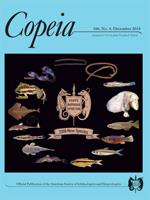As DNA-based phylogenetic analyses have exploded, historically phenotype-based evolutionary hypotheses throughout the tree of life have been rewritten. However, rarely are DNA-based phylogenetic hypotheses tested via the reanalysis of phenotypic data. Skeletons representing all four recognized genera of the Guiana Shield endemic suckermouth armored catfish clade Lithoxini were examined to test a recently published DNA-based phylogenetic hypothesis using morphological evidence. Phylogenetic analysis of 54 mostly osteological characters yielded a single most parsimonious tree of 90 steps that was congruent with the molecular hypothesis: (Avalithoxus, ((Exastilithoxus), (Lithoxus, Paralithoxus))). Lithoxini was a well-supported clade with 20 synapomorphies, as was each of the genera within this clade. Avalithoxus jantjae, which was originally described in Lithoxus, was found to be missing the unique synapomorphies of Lithoxus Paralithoxus: a spoon-shaped, ventrally oriented process on the metapterygoid and a process on the preoperculo-hyomandibular ridge.
BioOne.org will be down briefly for maintenance on 17 December 2024 between 18:00-22:00 Pacific Time US. We apologize for any inconvenience.
How to translate text using browser tools
12 December 2018
Using Morphology to Test DNA-Based Phylogenetic Relationships within the Guiana Shield Catfish Tribe Lithoxini (Siluriformes: Loricariidae)
Jonathan W. Armbruster,
Lauren Greene,
Nathan K. Lujan
ACCESS THE FULL ARTICLE





